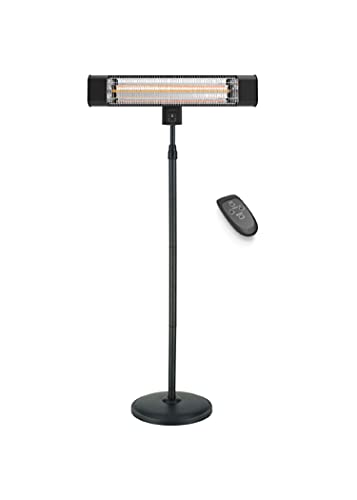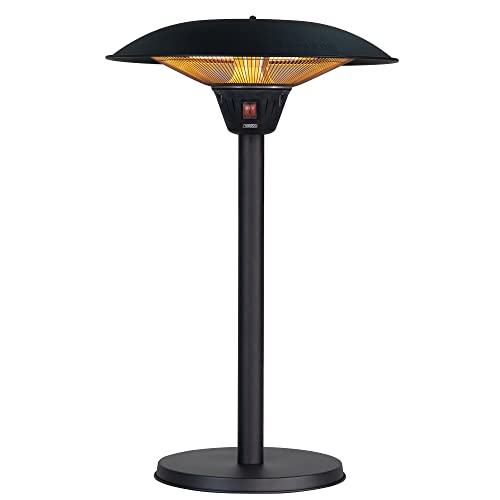Patio Outdoor Gas Heater Techniques To Simplify Your Daily Lifethe One…
페이지 정보
작성자 Taren 작성일25-01-07 22:20 조회15회 댓글0건관련링크
본문
 patio outdoor gas heater (Learn Additional Here)
patio outdoor gas heater (Learn Additional Here)Patio outdoor gas heaters are a simple and easy-to-use method to add warmth and ambience to your outdoor space. These devices use liquefied petrol gas (LPG) to produce radiant heat that warms the space surrounding them in a similar way to sunlight.
 Propane patio heaters require a refillable tank.
Propane patio heaters require a refillable tank.Safety
Gas patio heaters are becoming popular for heating patios as well as other areas of open space in homes and restaurants. These heaters are practical and comfortable, but they can also pose some dangers to your safety if not used or maintained properly. Always follow the manufacturer's guidelines and follow all applicable laws and regulations when using a gas patio heater.
Gas patio heaters can heat outdoor areas as high as 215 feet they are an ideal option for large, well-ventilated spaces. Many models include a remote control and timer for easy operation. Natural gas patio heaters require connection to a home's gas flame patio heater line, while portable propane models can be operated by an internal propane tank.
In the initial setup make sure that all connections are secure and free of leaks. This can be accomplished by applying a soapy solution to the hose and gas tank connections. If you notice that bubbles are rising or you smell gas, shut off the heater and tighten the connections. It is also recommended to be able to have your gas heater inspected by a professional prior to use.
Do not leave a heating unit unattended or near combustible objects such as furniture, rugs and curtains. The extreme heat of a heater powered by gas can cause an explosion. Always keep flammable materials at least three feet from the heater, and don't place it on a sloping surface.
Make sure your gas-burning buying patio gas heater is equipped with a tip-over switch that shuts off the flow of gas if it tilts more than 15 degrees from its vertical position. This feature is especially beneficial for patios exposed to wind which could cause the heater to tip.
A carbon monoxide detector is another important safety feature for any patio, as it will alert you if harmful carbon monoxide is present in the air. Carbon monoxide poisoning is a serious condition that can lead to headaches, dizziness and fainting. It is therefore essential to check and maintain this detector on a regular basis.
A gas heater for outdoor use should be stored indoors or in a partially enclosed space when not in use. If you leave the heater outside, it may develop issues like gas lines getting blocked and corrosion. You should also cover your patio heater when it's not in use to shield it from insects and other debris.
Ease of Setup
Patio heaters help to keep outdoor living areas warm and comfortable when temperatures drop. It's a cost-effective and simple method to enjoy your garden gas patio heater, yard or other outdoor areas for longer. Gas patio heaters are available in a variety, including freestanding and tabletop models. You can choose between propane and natural models, or even a model with a decorative stone finish such as hammered brass, hammered brass or Wicker.
You'll need to determine the amount of heat needed to accommodate the amount of guests you usually entertain before you decide on the style. This will help you decide the power of a patio heater you should purchase and which type of fuel is most appropriate for your space. You can determine the amount of BTUs required by multiplying your space's cubic footage by a 23 degree increase in temperature.
If you have a well-ventilated outdoor space, natural gas heaters might be the perfect choice for you. They are less expensive to run and can be connected directly to your home's natural gas line. They aren't as mobile, and they require extension hoses which could be a danger to walk on when not in use.
Many homes also benefit from a propane-powered patio heater. These have an impressive heating capacity of up to 250 sq. These models offer a variety of safety features, including an anti-slant feature that stops the burner if it tilts over 47 degrees. These models have a built-in propane tank level gauge as well as adjustable flame settings to accommodate different seating arrangements.
Gas fire pits are another popular option for heating your patio. They provide the same comfort and ambiance as a fireplace that burns wood, however, they also have the added benefit of being convenient, clean and efficient. They come in a wide range of styles and are used for cooking, entertaining and relaxation. Some are equipped with a cage to protect children and pets from accidental burns, and also have an internal spark ignition for quick lighting.
Convenience
A patio outdoor gas heater lets you extend the use of a deck or balcony through the winter. Radiant heat is used to warm the air. The unit uses a burner to burn liquefied gas, natural gases or other fuels. It then sends the flame to the hood, which is reflective. The hood is usually silvered to reflect heat upwards.
You can choose from a range of sizes and models, dependent on the quantity of heat you require and how many people are likely to be seated around the heater. Some models include an electric ignitor, which makes it easy to ignite the flame. Others require a lighter, such as an outdoor lighter or a match. If you're using a gas patio heater, it is important to have a fire extinguisher on hand in case of an accident.
Each model comes with a BTU rating, which is related to the capacity of heating an area. The more efficient the BTU rating, the bigger the area you wish to heat. If you are unsure check the specifications of the manufacturer.
Propane patio heating units are popular because they are available at most gas stations and convenience stores. The downside is that you need to purchase individual tanks, and the total cost is slightly higher than for an electric patio heater or natural gas patio heater.
If you decide to install a gas patio heater you can place it in a sheltered area or anchored to the wall. If you opt for the latter option, the professional installer must run a line for natural gas from the main water supply of your home or gas supply. This type of outdoor heater is an excellent option if your house has a seaside locale, since it is resistant to weather and corrosion.
When placing your patio heater be sure to be placed on an even surface. If you place it on a slope the heater could slide over and cause an hazard for fire. Examining for gas leaks is crucial. To do this make sure you apply a solution of soapy water to all the connection points. If you notice bubbles in any area of the heater, you must immediately switch it off and contact an expert to repair.
Cost
There are a variety of options to heat your outdoor space from gas patio heaters to fire pits, and more. The kind you pick depends on a few factors including how much heat you require and what kind of atmosphere you'd like to create.
If you're looking for an affordable option that can keep your guests warm without breaking the bank An electric patio heater could be the ideal choice for you. They are easy to install and operate, and don't require professional installation. Natural gas patio heaters, on the other hand, are permanent fixtures that can be connected directly to your home's natural gas line. They offer a broad variety of heat. They do not require propane tanks, so you can host events without having to worry about running out.
Chimeneas can be an affordable option for those looking for a traditional wood-burning fireplace. They typically contain a flame that is powered by natural gas, LPG or propane and uses a reflector to redirect the heat to the patio area. They are not recommended to be used in enclosed areas as the open flame could cause fire and lead to carbon monoxide poisoning.
Both propane and natural gas patio heaters are available as portable models that can be moved around to where they're needed most. You can also purchase an installation model that is permanently attached to a wall or post and will stay in place, but make certain to employ an expert for this type of work. Natural gas patio heaters are more costly initially, but they have the advantage of being connected to the gas line inside your home, eliminating the need for propane tanks.
The cost of patio heaters will vary depending on its size and its quality. Some models are as inexpensive as $100 while others can cost $500 or more. It's important that you store your unit properly when it is not in use, regardless of its model. This will prevent issues like rusting and clogging, and may extend its life.
Warning: Use of undefined constant php - assumed 'php' (this will throw an Error in a future version of PHP) in /data/www/kacu.hbni.co.kr/dev/skin/board/basic/view.skin.php on line 152
댓글목록
등록된 댓글이 없습니다.

